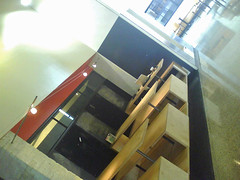Heh. At least it seems like the Higher Education section of The Australian has managed to quarantine itself from the melt-down that's occurred amongst its political journalists. There's a nice piece there today about our efforts at QUT to develop the C4C framework of collaborative capacities required of graduates in the developing produsage environment - an article which was sparked by our paper at Mobile Media 2007 (and a similar paper I presented at ICE 3 earlier this year). Campus Review also reported on this recently, following a Sydney University press release. Neither note Trendwatching as the originators …













